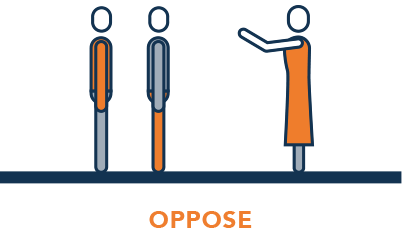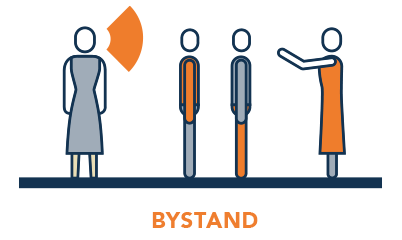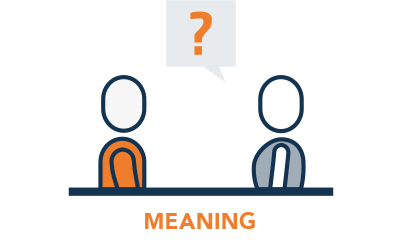The bMaps model
In structural dynamics, there are four connected levels of structure that help us understand conversations.
Level 1
Action propensities
Conversation is made up of four different “speech acts,” or action propensities. The actual content of the speech doesn’t matter – what is important is the structural direction.

A move initiates or sets the direction. “Let’s start the meeting.”

A follow supports and provides completion. “Good plan. I’ll take notes.”

An oppose provides correction and challenge. “Before we begin, we might want to think about switching the order of the agenda.”

A bystand provides perspective and connects different views. “It seems like we aren’t sure whether to dive right in, or spend time reorganizing the agenda.”
Level 2
Communication domains
Communication domains refer to the “language” and topics we prefer.

Affect is the language of people and relationships.

Power is the language of task, efficiency and getting things done

Meaning is the language of purpose, ideas and theory.
Level 3
Operating systems
Operating systems are implicit rules that govern how we prefer to organize ourselves in groups, teams or organizations.

A closed operating system values hierarchy, clear rules, procedures, and stability.

An open operating system values participation, process and input.

A random operating system values creativity, innovation, and individual autonomy.

Level 4
Childhood experiences
Communication structures develop early and become a central part of our internal architecture.
In this way, childhood experiences create our behavioral preferences for certain action propensities, communication domains and operating systems
High stakes
Our behavior changes as the stakes rise from low to high.

Low-stakes
In low-stakes situations, we are able to use our full range of behavioral approaches and we are at our most effective.

Medium-stakes
In medium-stakes situations, the temperature is rising, and we may notice our range is diminished. Medium-stakes situations can tend to occur when the preferred communication domain and rules of order within an operating system are threatened.

High-stakes
High-stakes situations create intense anxiety and discomfort and cause involuntary responses, such as elevated pulse or sweaty palms. When we are in high-stakes, we may preference an entirely different set of behaviors than we do when the stakes are lower.
What raises the stakes?
There are many things that raise the stakes, and what these are differ for each of us. Differences – such as someone with different behavior preferences – can be stakes-raising, as can external factors like resource constraints.